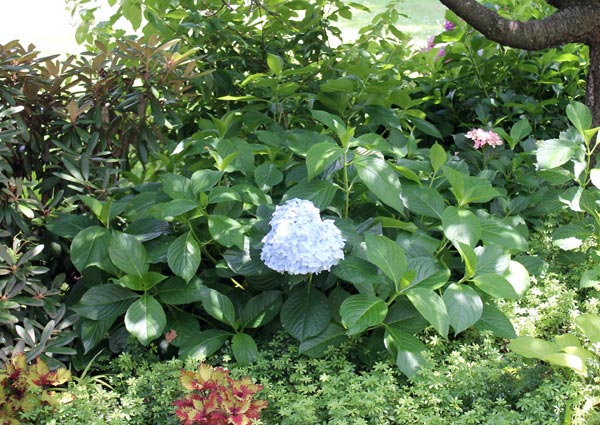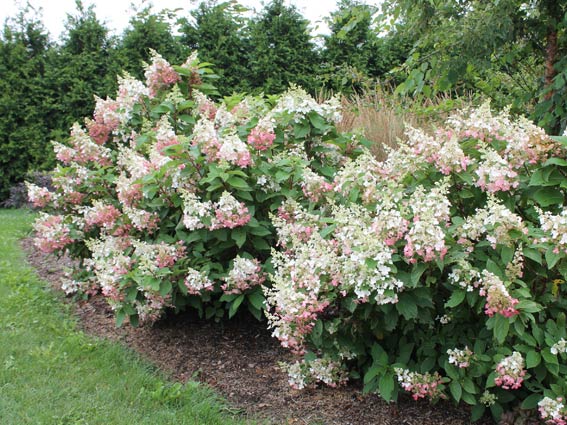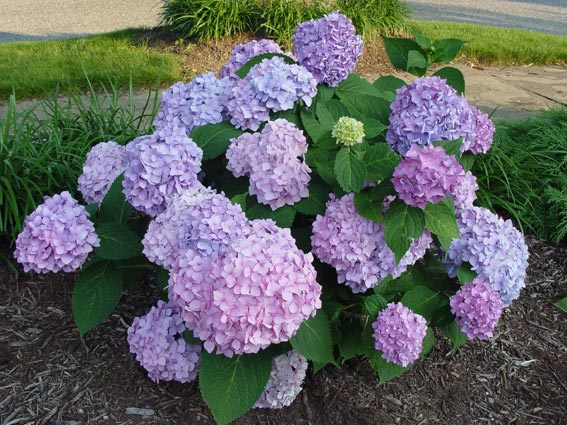Why Don’t My Shrubs Bloom?
Don't lose heart if your shrubs have stopped flowering - here's help to bring the blooms back.

Cold winters and ill-times pruning are two common explanations for why hydrangeas won't bloom. George Weigel
For a second summer in a row, gardeners throughout much of the United States experienced yet another sparse year for hydrangea flowers – or none at all. If the same plants had bloomed well in previous years, this lack of flowers may be caused by several reasons, including back-to-back colder than usual winters.
The most popular type of hydrangea – the so-called bigleaf hydrangea (Hydrangea macrophylla) with its softball-sized blue or pink orbs of flowers – blooms on “old” wood. That means the flower buds develop the previous fall on last year’s branches. If we have a colder-than-usual winter, the dormant flower buds may be frozen, leading to few or no blooms the following early summer. Sub-zero blasts the past two winters did just that in many parts of the country, and even may have killed entire hydrangea stems as well. The good news is that if you do nothing and the coming winter is “normal”, you can expect to see blooms next year.
Where the same type of hydrangeas isn’t blooming any year, a related problem is pruning the shrubs in fall, winter, or early spring. This means that the gardener is cutting off those already-formed buds instead of winter cold killing them.
Another explanation is that your hydrangea is a variety that isn’t quite bud-hardy enough for your zone or region. While the plant itself may survive winter, the flower buds aren’t sufficiently cold hardy to survive your region’s typical winter. That scenario usually happens with gift hydrangeas that gardeners receive for Easter or other late winter to early spring holidays. Growers produce these types in warmed greenhouses, timed so they’re in peak bloom for the occasion. Later on gardeners plant these hydrangeas outside, but seldom see a bloom again. In general, most bigleaf hydrangeas won’t flower reliably in zones colder than Zone 5b, and some won't even flower well in Zone 6.
1. Shade. While bigleaf hydrangeas do best in dappled sunlight, or morning sun and afternoon shade, they may not get enough sunlight to trigger flowering in full shade. Solve the problem by moving the plant to a brighter location.
2. The age of the plant. Some plants need one or more years for their roots to establish in the ground before blooming. So if your plant has been in the ground for only a year or two, it may well bloom by year three or four.
3. Poor soil nutrition. Bloom may well be affected if nutrients in the soil are out of balance. The most likely culprit is an excess of nitrogen probably caused by regular fertilizing of nitrogen-craving lawns next to the hydrangea bed. Nitrogen produces dense vegetative growth and dark green leaves, at the expense of flowers. The solution is to avoid fertilizing with nitrogen nearby; better yet, test the soil to see how the nutrition profile fares. County Extension offices and most garden centers offer do-it-yourself test kits. The reports tell you what fertilizer, if any, is needed. To turn/keep your hydrangea flowers blue, you’ll also need acidic soil. If alkaline conditions are giving you pink or purple flowers, applications of sulfur or aluminum sulfate make the soil more acidic.

Oakleaf hydrangea. The oakleaf hydrangea is a cold-hardier species to select if winter keeps knocking out your bigleaf hydrangeas blooms – and if white flowers are OK. © George Weigel
So what can you do to maximize your odds of hydrangea-flower-filled gardens every year?
1. Select a species of hydrangea that is reliably cold hardy in your area.
A. North American native oakleaf hydrangea (Hydrangea quercifolia) is a species that is a full growing zone more cold tolerant than bigleaf hydrangeas. Oakleaf hydrangeas bear cone-shaped white or light-pink flowers, instead of the popular ball-shaped blue or pink ones. The leaves of oakleaf hydrangea have pointed lobes like oak leaves and turn a rich burgundy color in fall. Zones 4b to 5a.
B. Mountain hydrangea (Hydrangea serrata). This species has leaves and flowers similar to those of bigleaf hydrangea, but with slightly better cold hardiness.

These Pinky Winky® hydrangeas are an example of panicle hydrangeas that bloom on new wood, and withstand very cold winters. © George Weigel
C. Panicle hydrangea (Hydrangea paniculata). Panicle hydrangeas, also known as “PeeGee” or tree-type hydrangeas, grow more upright than rounded bigleaf or mountain types. They produce large cone-shaped flowers of white, pink, or rose on wood made the current year. Bloom is somewhat later in mid to late summer. This is the most sun-tolerant hydrangea. Zone 3.
D. Smooth hydrangeas (Hydrangea arborescens). Smooth hydrangeas are U.S. woodland natives that produce huge balls of white (sometimes greenish) or pink flowers in summer. Typically these flop from their own weight. Smooth hydrangea also blooms on “new wood” i.e. stems made the current season. ‘Annabelle’ is the best-known variety of this type. Cold hardy to Zone 3.

This reblooming Endless Summer® hydrangea produces flowers on the current season’s growth even if winter kills flower buds on last year’s branches. © George Weigel
2. Reblooming bigleaf varieties. If you really want those blue flowers, look for a reblooming type, such as the Endless Summer®, or Forever and Ever® series. These bloom on both old and new wood, so even if a nasty winter nips the first round of flower buds, that season’s new growth will produce a later flush of bloom.
Once your hydrangeas are in the ground, learn the right – or wrong – time to prune them. The key is whether your hydrangea blooms on
A. old wood (flower buds form on branches the preceding fall) or
B. on new wood (flower buds form on shoots grown earlier in the same season).
A. Bigleaf, mountain, and oakleaf hydrangeas all bloom on old wood and are best pruned right after they finish flowering.
B. Smooth and panicle hydrangeas bloom on new wood. These are best pruned in late winter or very early spring before new growth begins.
A final alternative is to protect vulnerable plants over the winter with a cage or wrap of burlap supported by stakes. Stuff fallen leaves or straw in this burlap cylinder for insulation. Be alert for rodent damage; check regularly for any damage or nesting. Remove the wrap first thing in spring.